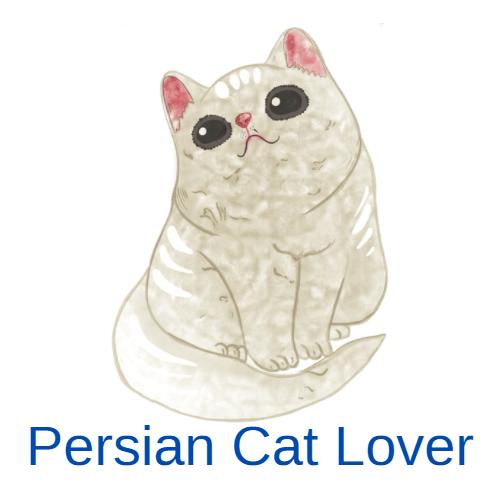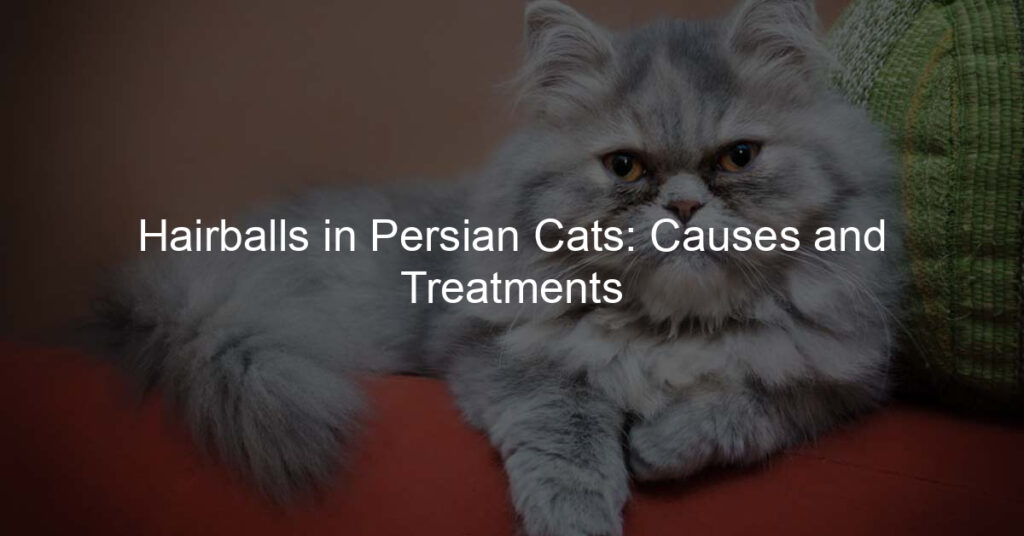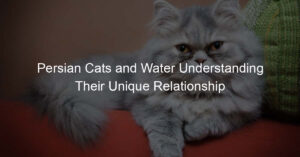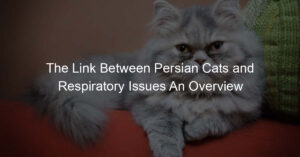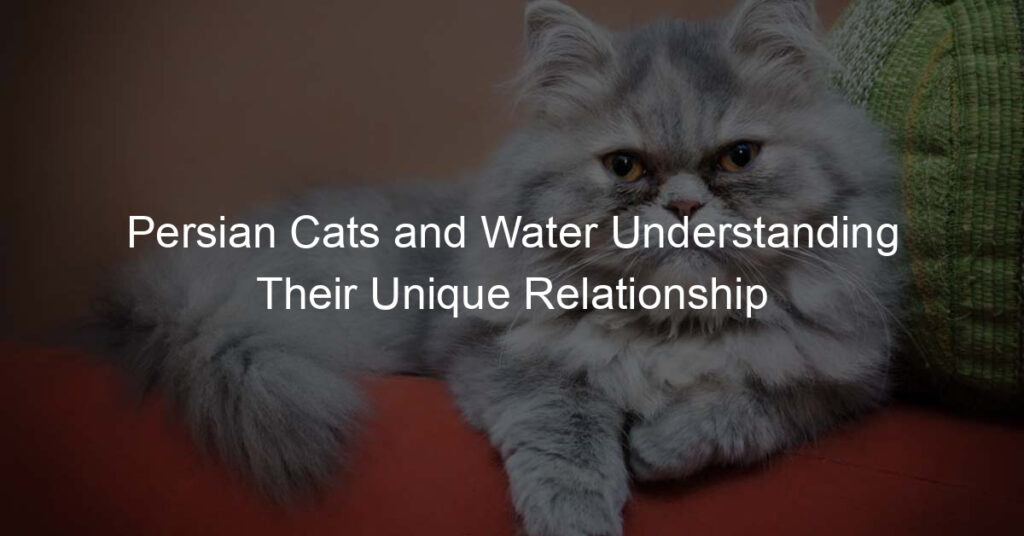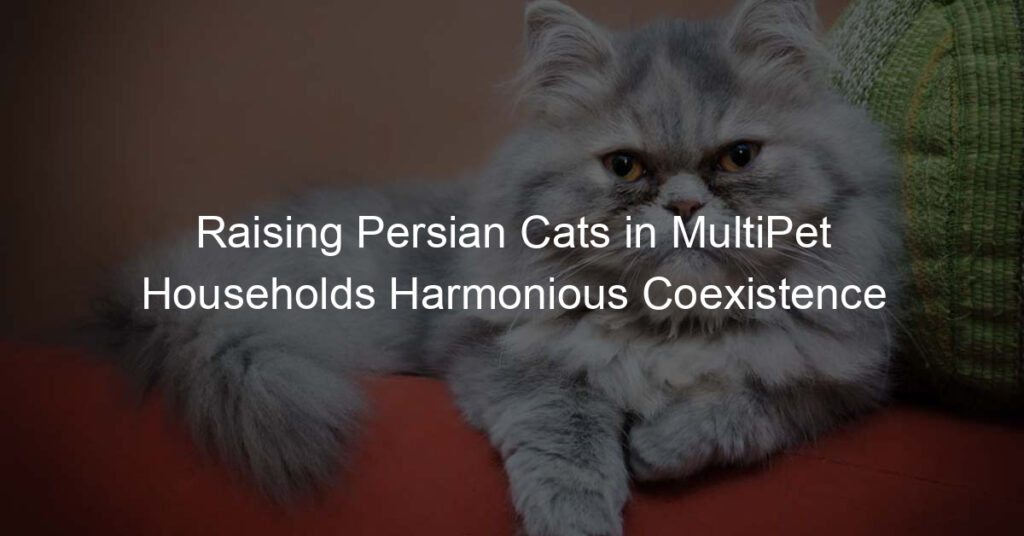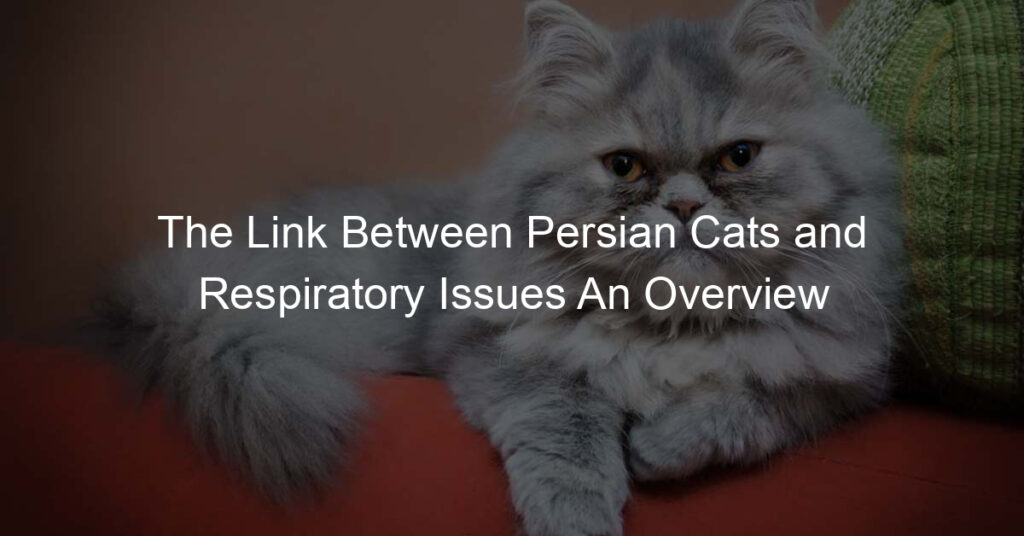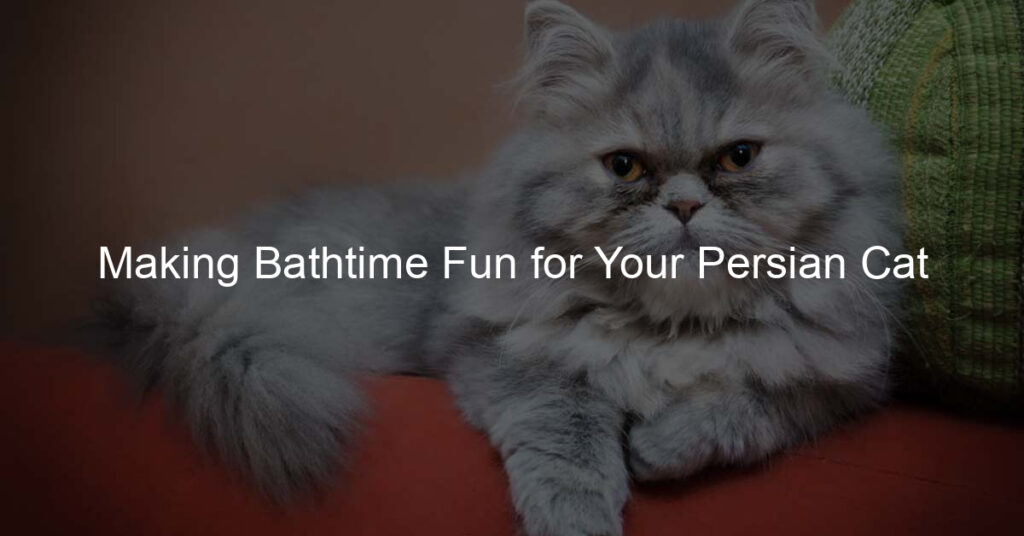If you’re a Persian cat owner, you’re probably aware of the hairball problem that comes with it. Hairballs in Persian cats are a common issue in Persian cats, and they can be a nuisance for both you and your cat.
In this article, we’ll discuss the causes of hairballs in Persian cats, the symptoms to look out for, and the different treatment options available.
Understanding hairballs in Persian cats is essential for their overall health. Hairballs are formed when cats groom themselves, and loose hair gets trapped in their digestive system.
The hair then accumulates and forms a ball that can be challenging to pass. While hairballs are a common issue in cats, they can be a severe health problem if left untreated.
Common causes of hairballs in Persian cats include a lack of grooming, a poor diet, and underlying medical conditions.
Persian cats have long, thick fur that requires regular grooming to prevent hairballs. A diet rich in fiber can also help prevent hairballs by promoting healthy digestion.
Understanding the causes of hairballs in Persian cats can help you take preventive measures to keep your cat healthy.
Key Takeaways
- Hairballs are a common issue in Persian cats and can be a severe health problem if left untreated.
- Regular grooming and a diet rich in fiber can help prevent hairballs in Persian cats.
- If your cat is showing symptoms of hairballs, it’s essential to consult a vet for proper diagnosis and treatment.
Hairballs in Persian Cats
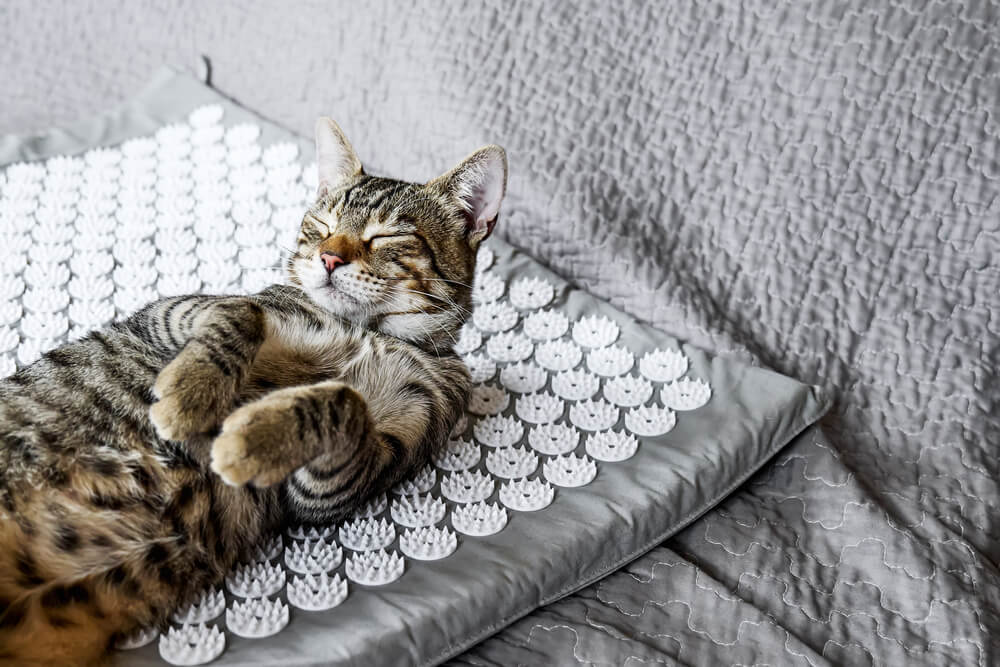
If you own a Persian cat, you may have noticed your feline friend coughing up hairballs from time to time. Hairballs are a common issue in cats, especially those with long hair, like Persian cats.
However, it’s important to understand what hairballs are and why they occur to prevent them from becoming a more serious health issue.
What are Hairballs?
Hairballs are formed when a cat ingests hair while grooming itself. A cat’s tongue is covered in tiny hooks that catch and remove loose fur from their coat.
This fur is then swallowed and passes through the digestive system. However, sometimes the hair doesn’t pass through the digestive system and accumulates in the stomach.
Over time, the hair forms a tight ball, which the cat will eventually regurgitate.
Why Do Hairballs Occur?
Hairballs are a natural part of a cat’s grooming process. However, they can become a problem when they occur too frequently or when they’re too large to be regurgitated.
There are several reasons why hairballs can occur more frequently in Persian cats:
- Long Hair: Persian cats have long, thick hair that requires more grooming than other breeds. This means they’re more likely to ingest hair while grooming themselves.
- Lack of Grooming: If your Persian cat isn’t groomed regularly, loose hair can accumulate in their coat. This increases the likelihood of them ingesting hair while grooming themselves.
- Diet: A diet lacking in fiber can cause constipation, which makes it harder for hair to pass through the digestive system. This can lead to hairballs forming in the stomach.
Symptoms of Hairballs
Most cats will cough up hairballs from time to time, which is a natural part of their grooming process.
However, if your cat is coughing up hairballs more frequently than usual, it may be a sign of an underlying health issue.
Some common symptoms of hairballs in cats include:
- Vomiting: Cats may vomit up hairballs, which can be a sign of a larger hairball or an obstruction in the digestive system.
- Lack of Appetite: Cats with hairballs may lose their appetite, which can lead to weight loss and other health issues.
- Constipation: Hairballs can cause constipation, which can lead to discomfort and pain for your cat.
If you notice any of these symptoms, it’s important to take your cat to the vet for a check-up. Your vet can help determine the cause of the hairballs and recommend treatment options to prevent them from occurring in the future.
Common Causes of Hairballs

As a Persian cat owner, you may have noticed your furry friend coughing up hairballs from time to time. Hairballs are a common occurrence in cats, and they are usually not a cause for concern.
Nevertheless, it is important to understand what causes hairballs in Persian cats so that you can take steps to prevent them. Here are some common causes of hairballs:
1. Grooming
Persian cats are known for their long, luxurious coats, which require regular grooming to keep them healthy and shiny.
Yet, when cats groom themselves, they ingest loose hairs, which can accumulate in their stomachs and form hairballs. If your Persian cat is not groomed regularly, they are more likely to develop hairballs.
2. Diet
The food your Persian cat eats can also contribute to the formation of hairballs. If your cat’s diet lacks sufficient fiber, it can slow down their digestive system, making it harder for them to pass hairballs.
Additionally, if your cat is not drinking enough water, it can cause their digestive system to become dehydrated, making it harder for them to pass hairballs.
3. Lack of Exercise
Cats that are not active or do not get enough exercise are more likely to develop hairballs. Exercise helps to stimulate the digestive system and keep things moving, making it easier for your cat to pass hairballs.
4. Medical Conditions
In rare cases, hairballs can be a sign of an underlying medical condition. If your Persian cat is coughing up hairballs frequently or seems to be struggling to pass them, it is important to take them to the vet for a check-up.
Some medical conditions that can cause hairballs include gastrointestinal blockages, inflammatory bowel disease, and pancreatitis.
By understanding the common causes of hairballs in Persian cats, you can take steps to prevent them from forming.
Regular grooming, a high-fiber diet, exercise, and regular vet check-ups can all help to keep your furry friend healthy and happy.
Symptoms of Hairballs in Persian Cats
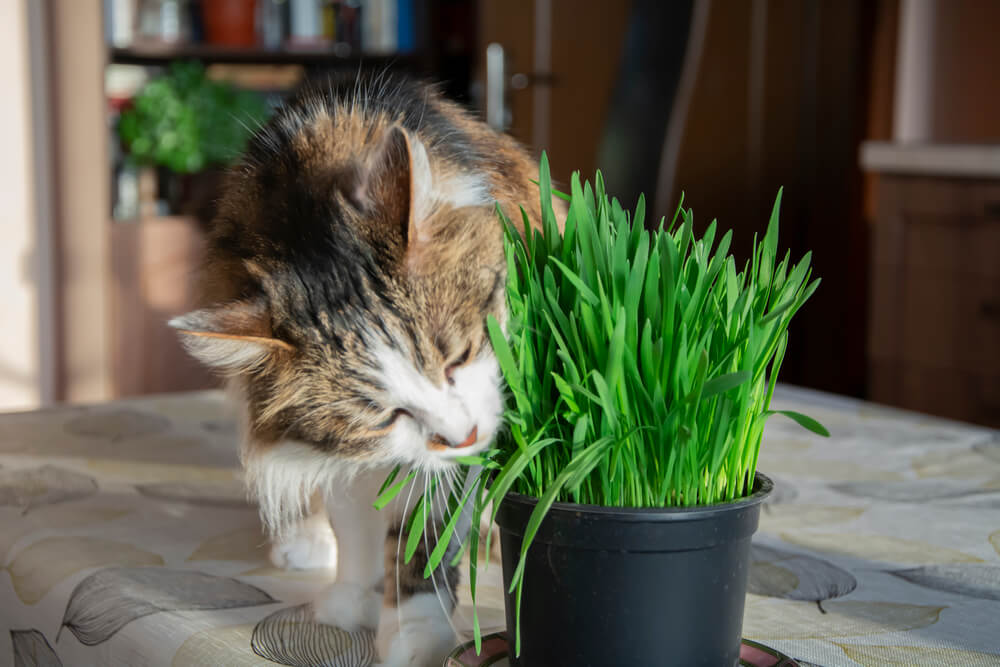
If you are a Persian cat owner, you know that hairballs are a common occurrence. Hairballs are caused by your cat grooming themselves and ingesting hair.
While hairballs are not usually a cause for concern, they can lead to discomfort and other symptoms.
Here are some common symptoms to look out for if you suspect your Persian cat has a hairball:
- Vomiting: This is the most common symptom of a hairball. Your cat may vomit up a hairball or a mixture of hair and stomach contents. It may look like a long tube or a clump of hair.
- Coughing: Your cat may cough or gag as they try to bring up the hairball. This may be accompanied by retching or hacking sounds.
- Lack of Appetite: If your cat has a hairball, they may lose their appetite. This is because the hairball can cause discomfort and make it difficult for your cat to eat.
- Constipation: Hairballs can cause constipation in some cats. This is because the hairball can block the digestive tract and make it difficult for your cat to pass stool.
- Lethargy: If your cat is not feeling well due to a hairball, they may become lethargic and less active than usual.
If your Persian cat is exhibiting any of these symptoms, it is important to take them to the vet. While hairballs are usually harmless, they can lead to serious health problems if left untreated.
Your vet can help you determine the best course of action to treat your cat’s hairball and prevent future occurrences.
Diagnosis Methods
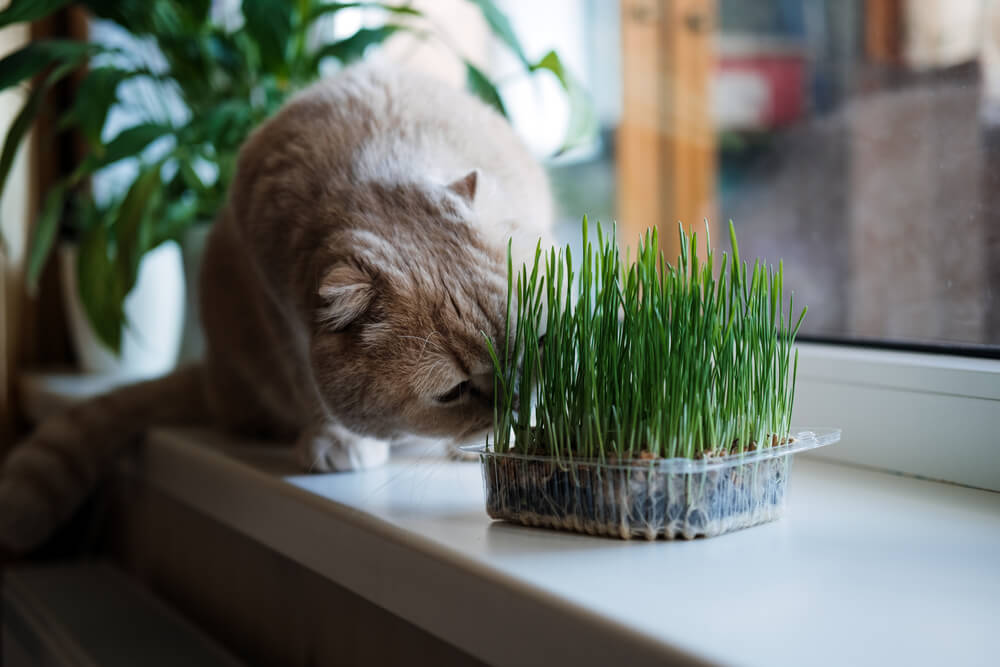
If you suspect that your Persian cat has hairballs, there are a few methods that a veterinarian may use to diagnose the issue. Here are some of the most common methods:
Physical Examination
During a physical examination, your vet will examine your cat’s coat and skin for signs of excessive grooming or hair loss.
They will also listen to your cat’s heart and lungs to check for any abnormalities. If the vet suspects hairballs, they may feel your cat’s abdomen for any lumps or masses.
X-Rays or Ultrasound
If the vet can’t feel any lumps or masses during the physical examination, they may recommend an X-ray or ultrasound to check for hairballs in your cat’s stomach or intestines.
These imaging tests can also help rule out other potential issues, such as tumors or blockages.
Endoscopy
In some cases, a vet may recommend an endoscopy to diagnose hairballs. During this procedure, a small camera is inserted into your cat’s digestive tract to look for any hairballs or other obstructions.
If a hairball is found, the vet may be able to remove it using the endoscope.
It’s important to note that hairballs can sometimes be difficult to diagnose, as they can mimic other health issues.
If you suspect that your cat has hairballs, it’s always best to consult with a veterinarian to determine the underlying cause of your cat’s symptoms.
Preventive Measures
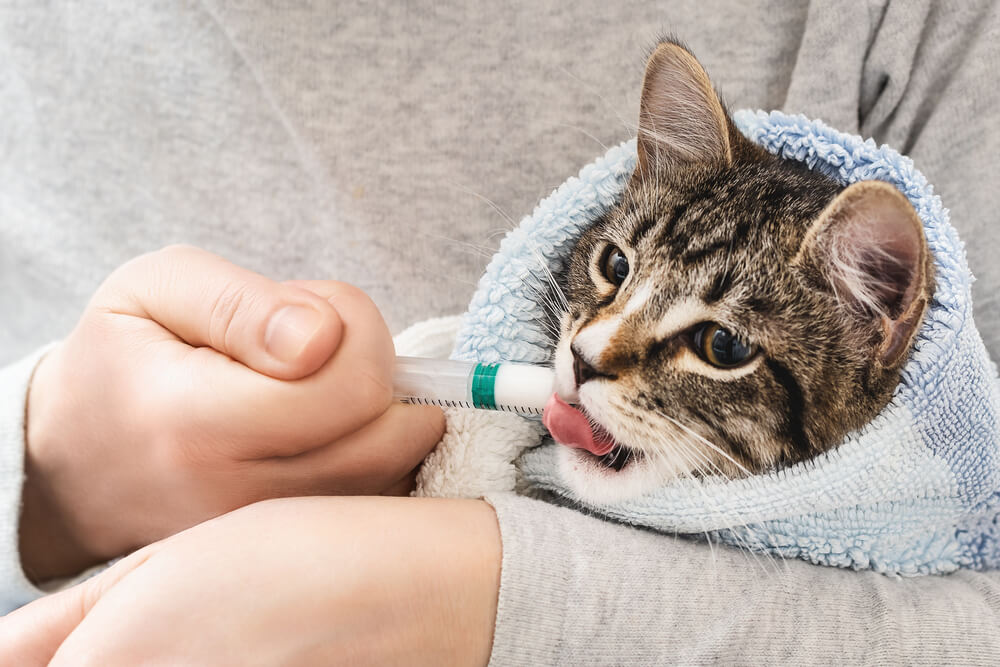
Preventing hairballs in Persian cats is possible with some simple measures. Here are some things you can do to reduce the likelihood of your cat developing hairballs:
Regular grooming
One of the most important steps in preventing hairballs is to keep your cat groomed regularly. Brushing their fur helps to remove loose hairs and minimize the chance of them getting swallowed and resulting in a hairball.
Daily brushing is recommended, especially during shedding season.
Appropriate diet
Feeding your cat a high-fiber diet can help prevent hairballs. Fiber acts as a natural laxative, helping to move hair through your cat’s digestive system.
You can also consider feeding your cat specially formulated hairball control cat food. These foods contain ingredients that help to reduce hairball formation.
Plenty of water
Encouraging your cat to drink plenty of water can help to prevent hairballs. Water helps to keep your cat’s digestive system functioning properly, which can reduce the likelihood of hairballs forming.
Playtime
Regular playtime can help to reduce stress in your cat, which can also help to prevent hairballs. Stress can cause your cat to groom excessively, leading to more hair being ingested and increasing the likelihood of hairballs forming.
Medical check-ups
Regular medical check-ups with your veterinarian can help to detect any underlying health conditions that may contribute to hairball formation. Your veterinarian can also provide advice on hairball prevention and treatment.
By following these preventive measures, you can help to reduce the likelihood of your Persian cat developing hairballs.
Hairball Treatments
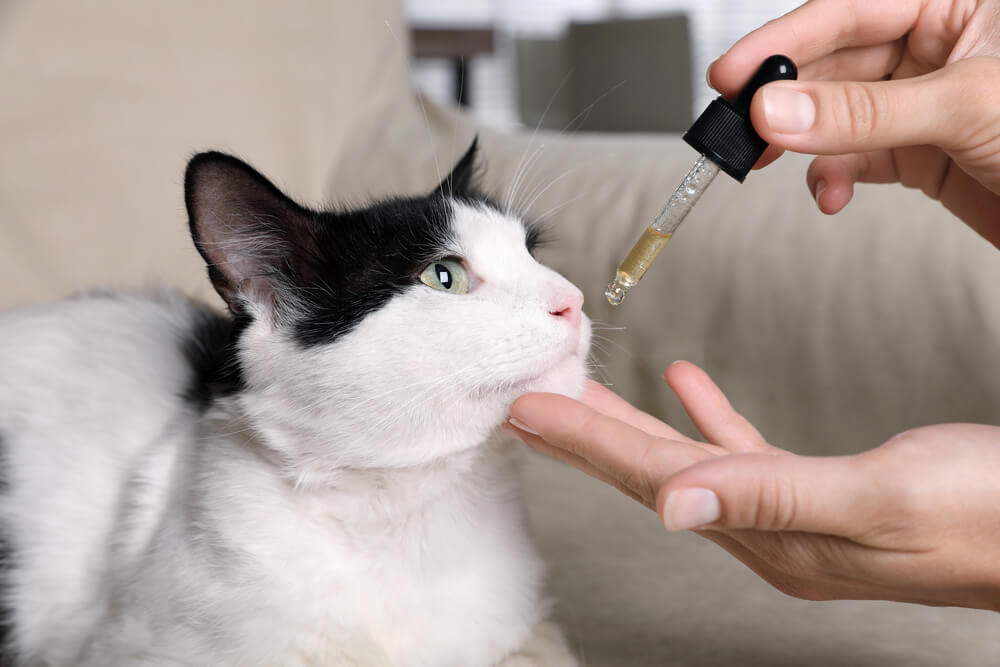
If you notice that your Persian cat is coughing up hairballs, there are several treatments you can try to help alleviate the problem.
Here are some options to consider:
1. Grooming
One of the most effective ways to prevent hairballs is by grooming your cat regularly. Brushing their fur helps to remove loose hairs and minimize the chance of them getting swallowed and resulting in a hairball.
Use a brush that is designed for cats with long hair, like a slicker brush or a comb.
2. Diet
Another important factor in preventing hairballs is your cat’s diet. Feeding them high-fiber food can act like a natural laxative and help move hair through their digestive system.
You can also try feeding them a specialized hairball control formula that is designed to reduce hairballs.
3. Lubricants
There are several hairball lubricants available that can help move hair through your cat’s digestive system. These products contain oils or other lubricants that can help the hairball pass through more easily.
You can find these products in the form of treats, chews, or gels.
4. Medications
In some cases, your veterinarian may recommend medication to help treat hairballs. These medications can help to break down the hairball or stimulate your cat’s digestive system to help move it through.
Always consult with your veterinarian before giving your cat any medication.
By using a combination of these treatments, you can help prevent and treat hairballs in your Persian cat. Remember to always monitor your cat’s behavior and consult with your veterinarian if you notice any changes in their health.
Possible Complications
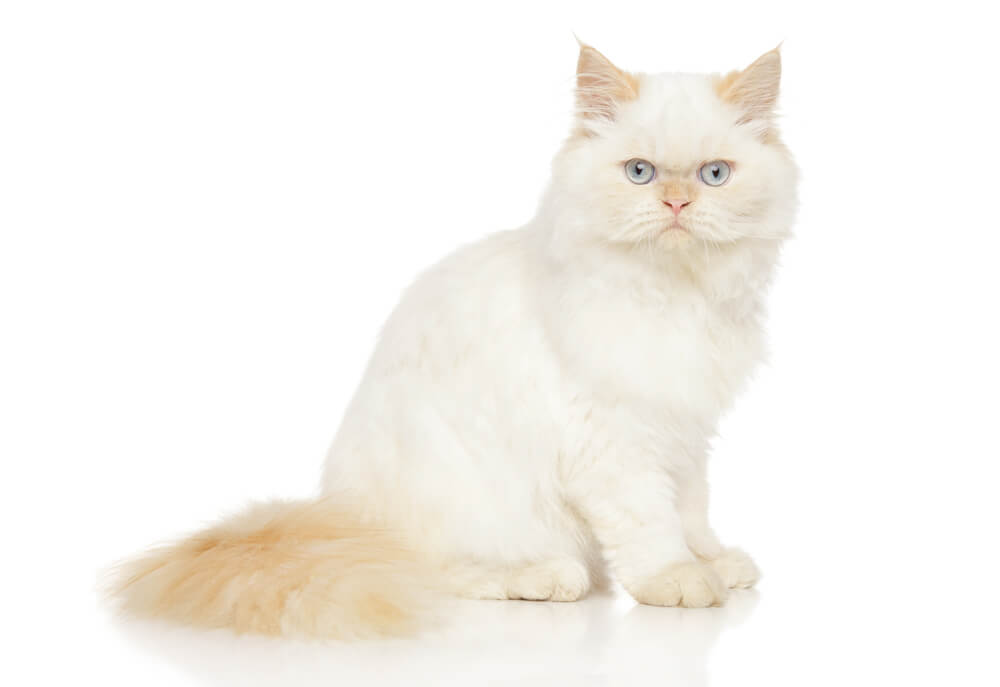
While hairballs are common in Persian cats, they can lead to several complications if left untreated. Here are some of the possible complications that you should be aware of:
Intestinal Blockage
When a hairball is too large to pass through the digestive system, it can cause an intestinal blockage. This can cause your cat to experience symptoms such as vomiting, diarrhea, and constipation.
If left untreated, an intestinal blockage can be life-threatening and may require surgery.
Respiratory Issues
If your cat coughs up a hairball and accidentally inhales it, it can cause respiratory issues such as coughing, wheezing, and difficulty breathing. In severe cases, it may cause pneumonia, which can be life-threatening.
If you notice any respiratory issues in your cat after they cough up a hairball, take them to the vet immediately.
Dehydration
Frequent vomiting due to hairballs can lead to dehydration in your cat. Dehydration can cause your cat to become lethargic, lose their appetite, and experience dry skin.
If you notice any signs of dehydration in your cat, make sure to provide them with plenty of water and take them to the vet if necessary.
Nutritional Deficiencies
If your cat is vomiting frequently due to hairballs, they may not be getting the necessary nutrients from their food. This can lead to nutritional deficiencies, which can cause a range of health issues.
If you notice any signs of nutritional deficiencies in your cat, such as weight loss or a dull coat, talk to your vet about adjusting their diet.
In conclusion, hairballs in Persian cats can lead to several complications if left untreated. Keep an eye on your cat’s behavior and take them to the vet if you notice any symptoms of complications.
When to Consult a Vet
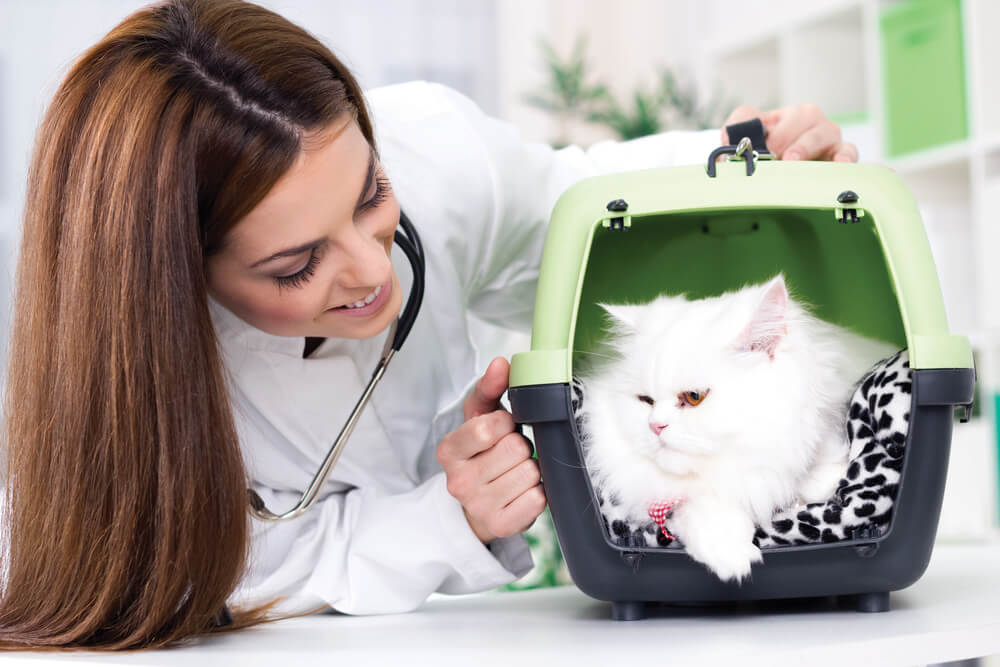
Hairballs are a common occurrence in cats, and most cats will experience them at some point in their lives. While they are usually harmless and can be managed with proper care, there are times when you should consult a vet.
Here are some signs that indicate you should take your Persian cat to the vet:
- Frequent vomiting: If your cat is vomiting frequently or has difficulty passing hairballs, it may be a sign of an underlying medical condition. The vet can perform a physical examination and recommend appropriate treatment.
- Loss of appetite: If your cat is not eating or drinking, it may be a sign of a blockage caused by a hairball. The vet can perform an X-ray or ultrasound to determine the cause of the blockage and recommend the appropriate treatment.
- Lethargy: If your cat is lethargic or seems to be in pain, it may be a sign of a more serious condition. The vet can perform a physical examination and recommend appropriate treatment.
- Constipation: If your cat is constipated or has difficulty passing stool, it may be a sign of a blockage caused by a hairball. The vet can prescribe laxatives or recommend other treatments to help your cat pass the hairball.
- Blood in vomit or stool: If you notice blood in your cat’s vomit or stool, it may be a sign of a more serious condition. The vet can perform tests to determine the cause of the bleeding and recommend appropriate treatment.
If you notice any of these signs, it’s important to consult a vet as soon as possible. Early diagnosis and treatment can help prevent serious complications and ensure your cat’s health and well-being.
Conclusion
In conclusion, hairballs are a common issue for Persian cats and can be caused by a variety of factors, such as diet, grooming habits, and underlying medical conditions.
Regardless, there are several effective treatments and preventative measures that you can take to help manage this issue and keep your cat healthy and happy.
Regular grooming, including brushing your cat’s fur and providing them with hairball prevention products, can help reduce the amount of hair that your cat ingests and minimize the risk of hairballs forming.
Also, providing your cat with a balanced and nutritious diet can help promote healthy digestion and reduce the likelihood of hairballs forming.
If your cat is experiencing frequent or severe hairballs, it is important to consult with your veterinarian to rule out any underlying medical conditions or complications.
Your veterinarian may recommend additional treatments, such as medication or dietary changes, to help manage this issue and improve your cat’s overall health.
Overall, with proper care and attention, you can help prevent and manage hairballs in your Persian cat and ensure that they live a long and healthy life.
Frequently Asked Questions
What causes hairballs in Persian cats?
Hairballs in Persian cats are caused by the ingestion of loose hair during grooming. Persian cats have long hair, which makes them more prone to hairballs.
When the ingested hair accumulates in the stomach, it forms a hairball. If the hairball is not expelled through vomiting or defecation, it can cause an obstruction in the digestive tract.
How can I prevent hairballs in my Persian cat?
You can prevent hairballs in your Persian cat by keeping them groomed. Brushing their fur regularly helps to remove loose hairs and minimize the chance of them getting swallowed and resulting in a hairball.
Keeping them on an appropriate diet with high-fiber food also helps, as it acts like a natural laxative.
What are some natural remedies for hairballs in Persian cats?
Some natural remedies for hairballs in Persian cats include adding a small amount of canned pumpkin to their food, which can help move hair through the digestive tract.
You can also give them a small amount of olive oil or coconut oil, which can help lubricate their digestive system.
What are some vet-recommended treatments for hairballs in Persian cats?
Some vet-recommended treatments for hairballs in Persian cats include hairball lubricants, which help the hairball move through the digestive tract, and laxatives, which help to soften the stool and make it easier to pass the hairball.
In severe cases, surgery may be required to remove the hairball obstruction.
How often should a Persian cat be treated for hairballs?
The frequency of treatment for hairballs in Persian cats depends on the individual cat and their grooming habits. Some cats may need to be treated more frequently than others.
It is important to consult with your veterinarian to determine the best treatment plan for your cat.
What are the signs that my Persian cat may have a hairball obstruction?
The signs that your Persian cat may have a hairball obstruction include vomiting, constipation, loss of appetite, lethargy, and abdominal pain.
If you notice any of these symptoms, it is important to take your cat to the veterinarian for diagnosis and treatment.
